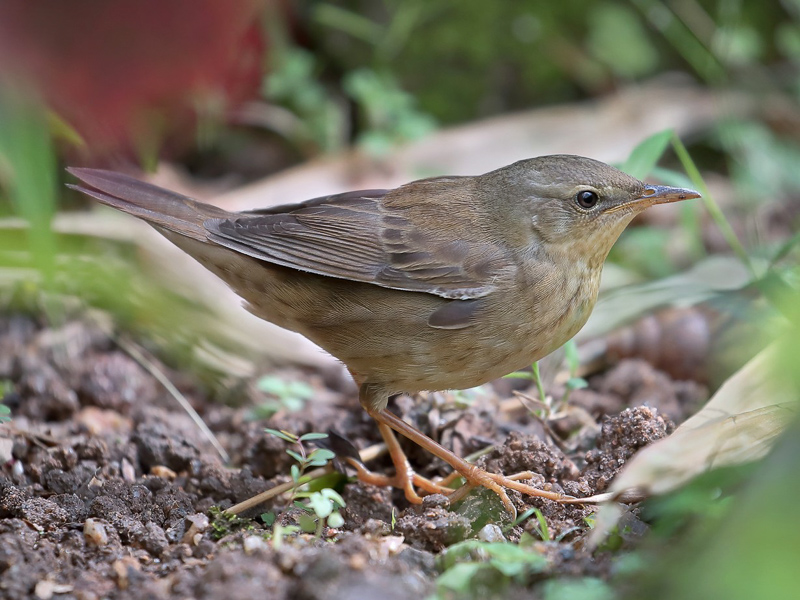Middendorff’s Grasshopper Warbler Helopsaltes ochotensis 北蝗鶯
Category I. Rare autumn migrant, one winter record. Generally trapped in reed marsh, but also seen in dense, low shrub.
IDENTIFICATION

Oct. 2020, Michelle and Peter Wong.
14-15 cm. Rounded outermost long primary with a pale outer web, full graduated tail, short neck and round body are typical of the genus. Resembles Pallas’s Grasshopper Warbler more than Styan’s, which is obviously larger, long-billed and long-tailed. Structure of Middendorff’s is similar to the former, but size is intermediate and overlaps with both. Bill obviously smaller than Styan’s.
Plumage resembles a washed-out Pallas’s Grasshopper Warbler lacking the obvious dark streaks on the crown and mantle (though may show slightly darker centres). The supercilium is much less obvious and the eye-stripe barely visible, imparting a plain-faced appearance. Rump, uppertail coverts and plain tail are warmer than mantle, but not as contrasting as Pallas’s Grasshopper Warbler (Kennerley and Leader 1993).
VOCALISATIONS
Similar to those of Styan’s Grasshopper Warbler, but no reports of vocalising birds in HK.
DISTRIBUTION & HABITAT PREFERENCE
Most birds have been trapped in the reed marsh at Mai Po NR, but others have occurred in the mangrove there, at Chek Lap Kok and the landscaped podium level of Telford Gardens, Kowloon Bay.
OCCURRENCE
All records are of single birds.
1993: Mai Po NR during 26-27 February (Leader 1994).
2009: trapped at Mai Po NR on 29 October.
2010: trapped at Kam Tin on 26 October.
2012: trapped at Mai Po NR on 11 September.
2015: at Chek Lap Kok during 9-13 October.
2017: trapped at Mai Po NR on 12 September and a second bird on 20 October.
2019: trapped at Mai Po NR on 30 May.
2020: at Telford Gardens, Kowloon Bay during 18-30 October.
BEHAVIOUR, FORAGING & DIET
Similar to its congeners, skulking, shy and difficult to see. Creeps around on the ground or very low in dense vegetation as it forages for insects.
RANGE & SYSTEMATICS
Monotypic. Breeds in far east Russia in coastal areas and islands of the Sea of Okhotsk including Hokkaido, Japan, and winters in the Philippines and north Borneo. In China occurs as a rare migrant in the eastern half (Liu and Chen 2020).
CONSERVATION STATUS
IUCN: Least Concern. Population trend decreasing.
Kennerley, P. R. and P. J. Leader (1993). Identification of Middendorf’s and Styan’s Grasshopper Warbler. Dutch Birding 15: 241-248.
Leader, P. J. (1994). Middendorff’s Grasshopper Warbler: the first record for Hong Kong. Hong Kong Bird Report 1993: 123-131.
Liu, Y. and Y. H. Chen (eds) (2020). The CNG Field Guide to the Birds of China (in Chinese). Hunan Science and Technology Publication House, Changsha.
Pearson, D. (2021). Middendorff's Grasshopper Warbler (Helopsaltes ochotensis), version 1.1. In Birds of the World (J. del Hoyo, A. Elliott, J. Sargatal, D. A. Christie, and E. de Juana, Editors). Cornell Lab of Ornithology, Ithaca, NY, USA. https://doi.org/10.2173/bow.migwar.01.1

